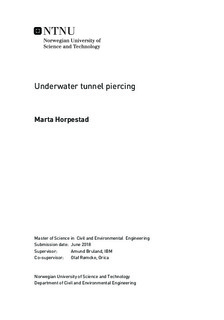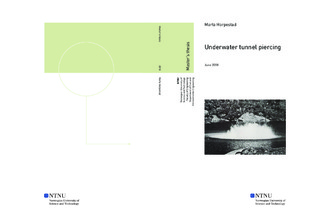| dc.description.abstract | ABSTRACT
This thesis is divided into two parts. Part 1 Master report is the introduction of the information and evaluation from the result of the research. Part 2 Underwater tunnel piercing - Project report is the product of the study and is a separate report of underwater tunnel piercing. This report explains both the procedure and the calculation basis.
Underwater tunnel piercing is a process that is often found in construction of hydroelectric plant and shore approach for oil-, gas- and water supply projects. The tunnel piercing is a method that is used to blast the last part of the water tunnel out in the reservoir. Hence, it is a very critical and important operation which has many uncertain elements.
The purpose of this thesis is to make an updated document that collects relevant data and information. The study for the thesis have been the to find relevant data, see if there has been any change since the last report and do an evaluation of the calculation basis for the pressure condition in the blast. To achieve this study, it was used methods like literature research, discussions with specialists and on site-investigation.
The newest improvement that was found was principally the technological equipment, like; multi eco sonar, the use of electronic detonators for tunnel piercing and a discovery of the calculation basis.
The calculations done in Lysebotn 2 at both Strandvatn and Lyngsvatn the calculations where not similar to the measurements. From the study of the calculation formulas and the calculation used in real projects showed that there are still many unsure elements. The study showed that elements like cross section of the piercing opening was not included in the calculation. A possible cause of the error of the tunnel piercing at Strandvatn is possibly the weak condition of the rock mass that made the blast bigger than expected. This shows the impact these conditions have for the result.
Further work for this thesis would be to do a comprehensive study of only the calculations and collect several measurements from blasts of future tunnel piercings. A study of the gas development and a simulation could improve a better tunnel piercing calculation basis. | |

